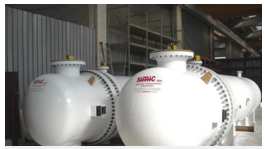- europages
- >
- COMPANIES - SUPPLIERS - SERVICE PROVIDERS
- >
- heat exchanger tubing
Results for
Heat exchanger tubing - Import export

ANTHERMO GMBH
Germany
Tubes wound into a spiral shape Coaxial heat exchangers consist of two or more pipe coils, which are routed into one another and wound up in a spiral shape. The primary medium runs in countercurrent to the secondary medium. Fast temperature exchange This countercurrent design achieves a very rapid temperature transition with high efficiency between the liquids. Due to the spiral shape, the rapid temperature exchange between the liquids is achieved in a very small space. No cleaning or maintenance required Another advantage is the encapsulation of both liquids from environmental influences. There is practically no cleaning or maintenance effort due to pollution from the environment. The coaxial heat exchanger also does not require any seals that require maintenance. Condenser or evaporator function Coaxial heat exchangers can be used for both condenser and evaporator functions.
Request for a quote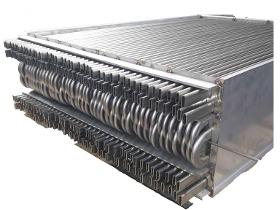
ANTHERMO GMBH
Germany
Temperature control of gaseous and liquid media Flat tube heat exchangers are generally used as air / air or air / liquid heat exchangers. Flat tube heat exchangers are used where the (exhaust) air is polluted and the installation space is limited. In heat recovery in particular, there are numerous applications for flat tube heat exchangers as so-called exhaust gas / exhaust air heat exchangers. Little installation space and less pressure loss While the rows of tubes in smooth tube heat exchangers consist of round tubes, the rows of tubes in flat tube heat exchangers have a special profile (see illustration). This special tube profile offers advantages over the round profile in certain applications. Flat tube heat exchangers require less installation space than smooth tube heat exchangers with the same exchange area and are therefore also lighter.
Request for a quote
ANTHERMO GMBH
Germany
Air-water / air-air heat exchanger as smooth tube heat exchanger up to 1,000 ° C Smooth tube heat exchanger as an air / water heat exchanger In the case of air-water heat exchangers (also called gas-water heat exchangers), a temperature exchange takes place between a gas (usually air) and a liquid. As a rule, the liquid medium flows inside the pipes, while the gaseous medium flows around the pipes outside the pipes. Smooth tube heat exchangers can cover various areas of application: heating, cooling and condensing as well as heat recovery. Smooth tube heat exchanger as air-to-air heat exchanger Smooth tube heat exchangers are also often used as air-to-air heat exchangers. In this application, a gas (e.g. exhaust air or exhaust gases) flows inside the pipes and a gas (e.g. fresh air) outside the pipes around the pipes.
Request for a quote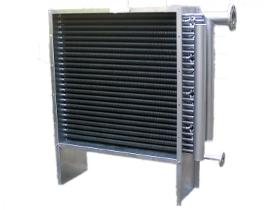
ANTHERMO GMBH
Germany
Air heat exchangers as finned tube heat exchangers Heat transfer between a gaseous media and a liquid Finned tube heat exchangers are often called air/water heat exchangers or gas/water heat exchangers. Heat transfer between a gas (for ex. air) and a liquid (for ex. water) takes place in the air-/water heat exchangers. To improve the thermal output transfer from the gas to the liquid, fins made of well heat transferring materials are put on the tubes. Very often air-/water heat exchangers are used as exhaust heat exchanger to gain the energy out of warm or hot exhaust fumes. Finned tube heat exchangers can also be used as air heater, air cooler or condenser.
Request for a quote
ANTHERMO GMBH
Germany
Customized air-water heat exchangers for industrial use Three types of air-water heat exchangers Three different designs o air-water heat exchangers The Anthermo GmbH delivers three different designs of air-water heat exchangers: Finned tube heat exchangers Lamella heat exchangers Straight tube heat exchangers These heat exchangers are designed in a way, that inside the tube water or another liquid circulates. The air flows around outside the tubes or the fins/lamellas. The connection between the fins and the tube is used to enlarge the space for heat transfer between the liquid and the gas fluid. The technical figures (for ex. amount of air, temperature, pressure, waste of air) can be different for the air-water heat exchanger. Also the operating conditions and the environment conditions can vary from application to application.
Request for a quote
ANTHERMO GMBH
Germany
Customized air-air heat exchanger for the industry (up to 1.000°C) Hot outgoing air and cold incoming air Very often hot exhaust gas gets out in the environment without any use. On the other hand cold incoming air must be lead into the production process and shall be warmed. This occurs for example very often within drying technology. In this case air-air heat exchangers can be used very efficient in heat recovery. As result you have great potential to save energy expenses. Three types of air-air heat exchangers The Anthermo GmbH delivers three types of different air-air-heat exchangers: cross-flow heat exchanger straight-tube heat exchanger flat-tube heat exchanger The technical figures (for ex. amount of air, temperature, pressure, waste of air) can be different for the air-air heat exchanger. Also the operating conditions and the environment conditions can vary from application to application.
Request for a quote
THERMOTEC PRODUKTIONSGESELLSCHAFT MBH
Germany
There are two different construction types. It's possible to create a design using a little construction space using the customer's data. The Thermo-Fluid S is connected directly between the oven pipe (or the heating system) and the chimney. The operating temperatures are up to 300°C (standard). The Thermo-Fluid S is low maintance with low pressure drop in the flue gas. Depending on the application you can have energy savings up to 15 %. A bigger construction is the Thermo-Fluid M, which is optimised for utilisation of waste heat from process air, flue gas or exhaust air. An energy yield of up to 1600 kW is possible, whereupon the pressure drop in the process air is less than 1.5 mbar. The pressure drop in water circuit is less than 200 mbar. This Shell and Tube heat exchanger is low maintance using the small type of construction. The Thermo-Fluid M modular and the standard temperatures are up to 300°C too. Both Shell and Tube Heat Exchangers are low maintance. One-off or
Request for a quote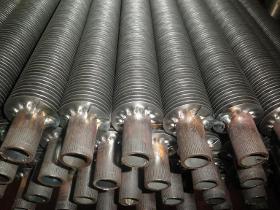
ANTHERMO GMBH
Germany
Finned tubes for efficient heat exchange Large exchange area in a small space By using finned tubes (also known as corrugated rib tubes), optimal heat exchange can be achieved in a small space. By applying so-called ribs to smooth tubes, the exchange area of the tubes is increased considerably. Finned tubes are usually used where an optimal temperature exchange between gaseous media and liquids is to be achieved. Different designs for every purpose In many cases, finned tubes are built into production machines as a component in machine and apparatus construction. Finned tubes can be designed for a variety of special application conditions. The length, the design and the ribbing can be individually adapted.
Request for a quote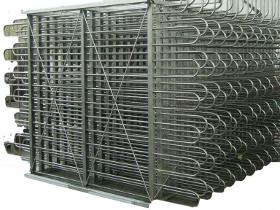
ANTHERMO GMBH
Germany
Temperature control of liquids Tube coil heat exchangers (so-called tube cooling coil heat exchangers) are generally used to control the temperature of liquids. This system can also be used to heat or cool liquids in a controlled manner. Due to their special shape, pipe coil heat exchangers are sometimes also called hairpin heat exchangers. Inexpensive applications The simple and solid structure enables it to be used in cost-effective applications. Coiled tube evaporator systems are ideally suited for brine and glycol applications. Classic variant Coiled tube evaporator systems are a classic and proven variant in the field of heat exchanger systems. Coiled tube heat exchangers are often used in ice storage systems or in the production of cold water units. In ice storage systems, coils can be used to achieve an even build-up of ice around the coils.
Request for a quote
KELVION HOLDING GMBH
Germany
A Box Cooler is a vessel water cooling system. It comprises a U-tube bundle that is fitted in the sea chest on the side of a vessel, saving space in the engine room. The sea chest is equipped with inlet and outlet grids. Cooling sea water enters through the inlet grid and flows along the U-tube bundle to the outlet grid, thus cooling the water inside the tubes. The cooling effect is achieved by the forced circulation of sea water when the vessel is moving or by natural convection when it is stationary. Box coolers can be used for a wide variety of temperature-reducing duties on a vessel, from cooling the main engines, auxiliary engines and bow thrusters to air conditioning and hydraulic systems. Kelvion Box Coolers are ideal for small and medium sized vessels, including for example: tugboats, barges, fishing boats, carriers, dredgers, supply vessels, ferries, ice breakers, cargo freighters, tankers and reefers.
Request for a quote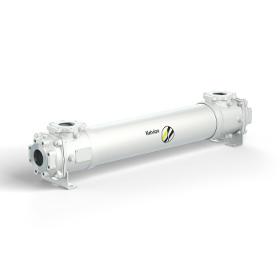
KELVION HOLDING GMBH
Germany
Different applications require different designs for an optimal fit, so we provide Shell & Tube heat exchangers in single tube design with plain, low and high fin tubes and also with compact fin bundles. The plain tube design is most suitable if media have similar heat transfer properties, where the compact fin design means the best possible performance if there is a substantial difference in heat transfer rate, for example when exchanging heat between oil and water. The low and high fin single tube solution is between the previous two designs in order to further optimize on flow, pressure drop and velocities of media.
Request for a quote
KELVION HOLDING GMBH
Germany
Double tube safety heat exchangers play an important role in applications where preventing media mixing in the event of a leak is paramount. They are widely used and accepted as standard in the chemical industry, power, heavy and light industry, oil & gas, marine, transportation, refrigeration and food & beverage sectors. Kelvion has a long track record in developing ground-breaking technologies always aiming to reach the highest levels of safety, environmental protection and cost-efficient operation. Our expert engineers are fully trained to provide you with the best-in-class solutions tailored to your specific requirements. As industries face ever stricter regulations for safeguarding requirements of environment and water supply, double tube safety heat exchangers are the technology of choice.
Request for a quote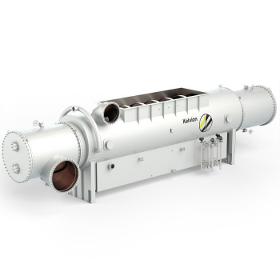
KELVION HOLDING GMBH
Germany
Optimization of the global efficiency of a power plant based on the Rankine Cycle, requires the incorporation of highly specialized equipment that supports the maximization of the efficiency of the steam cycle, reducing the primary energy consumption, minimizing the environmental impact and helping to optimize the OPEX and consequently the return on the investment. The highly increasing competitiveness among the different centralized electricity generation technologies and the increasing concern on environmental issues, force all the available generation technologies to improve their efficiencies, reducing the primary energy consumption.
Request for a quote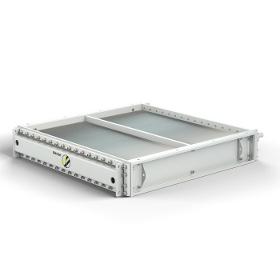
KELVION HOLDING GMBH
Germany
Closed circuit coolers are designed according to customers' requirements and assure exact compliance with their performance specifications. Our finned systems enhance heat exchange to the tube system and allow low material usage without performance loss. Tooling flexibility allows each system to be adjusted with its tube banks side by side or on top of each other, offers options of meeting extreme customer demands. Our many offical approvals and certifications allow us to design and manufacture closed circuit coolers for many and various applications.
Request for a quote
KASPAR SCHULZ BRAUEREIMASCHINENFABRIK & APPARATEBAUANSTALT GMBH
Germany
The SCHULZ malting system consists of an external steeping vessel and a germination-kilning combo drum with connected aeration technology. By using the most advanced technologies, SCHULZ offers an automatic and flexible malting system that can produce a variety of replicable high-quality malts and malt products. • The appropriate unit for every size company: 2; 5; 10 and 25 tons of barley per batch • Easy unit add-on option with additional germination-kilning combo drums when using existing components (steep, heating ventilation technology, glass tube heat exchanger, automation) • Flexible batch sizes of 25–100% overall capacity • Maximum level automation allows for reduction in labor/ labor costs • Allows for experimental processing of alternative grains for maximum product variety • Temperatures of up to 130 ° C in a closed system offer the opportunity to produce a wide range of malt varieties • Excellent hygienic conditions under the highest food production
Request for a quote
OGE GROUP
Germany
Whatever the distillation or filtering requirement of the vessel, including batch or continuous operation, we can build a column to meet most application needs. These columns can be built in a variety of sizes and can be furnished for atmospheric pressure, or designed for internal and external pressure.
Request for a quoteDo you sell or make similar products?
Sign up to europages and have your products listed
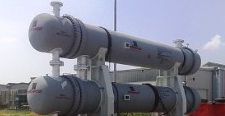
OGE GROUP
Germany
Shell and Tube Heat Exchangers | Air Coolers, Air Heaters, Pressure Vessels | Gas cooling in pneumatic conveying systems | Air cooling in industrial refrigeration | Air drying in textile machines | Air heating & cooling in HVAC systems | Coolers for A.C and D.C motors | Coolers for power transformers | Diesel and gas engines water cooling | Air preheaters for boiler plants | Economizers for steam, oil and hot water generation | Hydrocarbon condenser | Industrial process water cooling | Inter and after coolers | Oil cooling in lubrication system | Solvent recovery by condensation | Steam condenser
Request for a quote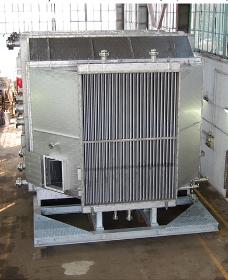
OGE GROUP
Germany
Finned or bare tube coils for air - gas heating or cooling (heavy duty) Shell and Tube Heat Exchangers | Air Coolers, Air Heaters, Pressure Vessels | Gas cooling in pneumatic conveying systems | Air cooling in industrial refrigeration | Air drying in textile machines | Air heating & cooling in HVAC systems | Coolers for A.C and D.C motors | Coolers for power transformers | Diesel and gas engines water cooling | Air preheaters for boiler plants | Economizers for steam, oil and hot water generation | Hydrocarbon condenser | Industrial process water cooling | Inter and after coolers | Oil cooling in lubrication system | Solvent recovery by condensation | Steam condenser
Request for a quote
OGE GROUP
Germany
Shell and Tube Heat Exchangers | Air Coolers, Air Heaters, Pressure Vessels | Gas cooling in pneumatic conveying systems | Air cooling in industrial refrigeration | Air drying in textile machines | Air heating & cooling in HVAC systems | Coolers for A.C and D.C motors | Coolers for power transformers | Diesel and gas engines water cooling | Air preheaters for boiler plants | Economizers for steam, oil and hot water generation | Hydrocarbon condenser | Industrial process water cooling | Inter and after coolers | Oil cooling in lubrication system | Solvent recovery by condensation | Steam condenser
Request for a quote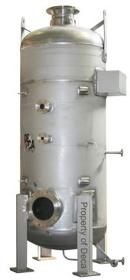
OGE GROUP
Germany
Shell and Tube Heat Exchangers | Air Coolers, Air Heaters, Pressure Vessels | Gas cooling in pneumatic conveying systems | Air cooling in industrial refrigeration | Air drying in textile machines | Air heating & cooling in HVAC systems | Coolers for A.C and D.C motors | Coolers for power transformers | Diesel and gas engines water cooling | Air preheaters for boiler plants | Economizers for steam, oil and hot water generation | Hydrocarbon condenser | Industrial process water cooling | Inter and after coolers | Oil cooling in lubrication system | Solvent recovery by condensation | Steam condenser
Request for a quote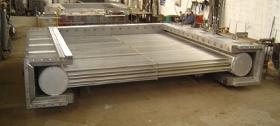
OGE GROUP
Germany
Shell and Tube Heat Exchangers | Air Coolers, Air Heaters, Pressure Vessels | Gas cooling in pneumatic conveying systems | Air cooling in industrial refrigeration | Air drying in textile machines | Air heating & cooling in HVAC systems | Coolers for A.C and D.C motors | Coolers for power transformers | Diesel and gas engines water cooling | Air preheaters for boiler plants | Economizers for steam, oil and hot water generation | Hydrocarbon condenser | Industrial process water cooling | Inter and after coolers | Oil cooling in lubrication system | Solvent recovery by condensation | Steam condenser
Request for a quote
THIELMANN ENERGIETECHNIK GMBH
Germany
TUBE BUNDLE HEAT EXCHANGER, TYPE VEV/VEV-L/VEV-ex Gas / Water; horizontal / vertical CHARACTERISTICS Optimal load case design Flow stream optimized design Vibration-optimized design OPTIONS Customer-specific design for various design codes (ASME, EN 13445, SVTI, AS1210, PD5500 etc.) Design according to TEMA Customer-specific approvals Customer-specific testings Application for sour gas (NACE) Design for low temperature down to -50 ° C Design pressure up to 300 bar Customer-specific nozzle arrangement GENERAL Heat exchangers (heat exchangers) heat gas for a subsequent system requirement or to counteract the Joule-Thomson effect. For example, For example by pressure reduction in a gas-pressure control. Heat exchangers can also be determined in the reverse mode of operation as coolers. The design is carried out as a steel welded construction in vertical or horizontal design.
Request for a quote
OGE GROUP
Germany
Shell and Tube Heat Exchangers | Air Coolers, Air Heaters, Pressure Vessels | Gas cooling in pneumatic conveying systems | Air cooling in industrial refrigeration | Air drying in textile machines | Air heating & cooling in HVAC systems | Coolers for A.C and D.C motors | Coolers for power transformers | Diesel and gas engines water cooling | Air preheaters for boiler plants | Economizers for steam, oil and hot water generation | Hydrocarbon condenser | Industrial process water cooling | Inter and after coolers | Oil cooling in lubrication system | Solvent recovery by condensation | Steam condenser
Request for a quote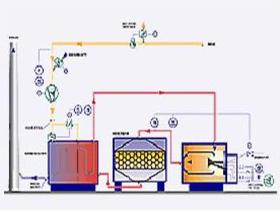
VENJAKOB MASCHINENBAU GMBH & CO KG
Germany
Under defined conditions, the catalytic thermal oxidizer (CTO) is an economical alternative for cleaning organic air pollutants (including VOCs). The system has proven to be particularly efficient when handling identifiable and consistent pollutant loads. In general, exhaust gases containing silicon and phosphorous cannot be treated. Under defined conditions, the Catalytic Thermal Oxidizer (CTO) is an economical alternative for cleaning organic air pollutants. The procedure is based upon the fact that under suitable conditions, even low amounts of volatile pollutants can be burnt without producing residue. This process would have required a high amount of heat energy. Therefore a catalyser and a heat exchanger are installed. The tubular heat exchanger installed behind the catalyser uses as much energy from the hot clean gases as possible in order to heat up the cold raw gases. The job of the catalyser is to decrease the amount of energy required to convert the pollutants without being depleted during the reaction. The raw gas loaded with pollutants is then forced into the heat exchangers of the CTO by the process fan. Here the raw gas is pre-heated by the hot clean gas. When required the burner heats up the exhaust gas further in the combustion chamber to the ignition temperature of the catalyser. In the catalyser the pollutants are converted into non-polluting CO2 and H20 vapour. After the catalyser, the clean gas is forced into the heat exchanger tubes. Along the way through the heat exchanger tubes the raw gases is heated and cooled. Eventually the clean gas leaves the system via the clean gas socket.
Request for a quote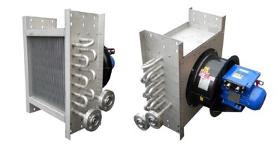
OGE GROUP
Germany
Shell and Tube Heat Exchangers | Air Coolers, Air Heaters, Pressure Vessels | Gas cooling in pneumatic conveying systems | Air cooling in industrial refrigeration | Air drying in textile machines | Air heating & cooling in HVAC systems | Coolers for A.C and D.C motors | Coolers for power transformers | Diesel and gas engines water cooling | Air preheaters for boiler plants | Economizers for steam, oil and hot water generation | Hydrocarbon condenser | Industrial process water cooling | Inter and after coolers | Oil cooling in lubrication system | Solvent recovery by condensation | Steam condenser
Request for a quote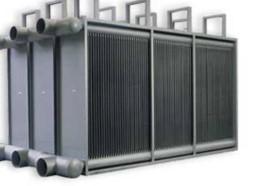
OGE GROUP
Germany
Shell and Tube Heat Exchangers | Air Coolers, Air Heaters, Pressure Vessels | Gas cooling in pneumatic conveying systems | Air cooling in industrial refrigeration | Air drying in textile machines | Air heating & cooling in HVAC systems | Coolers for A.C and D.C motors | Coolers for power transformers | Diesel and gas engines water cooling | Air preheaters for boiler plants | Economizers for steam, oil and hot water generation | Hydrocarbon condenser | Industrial process water cooling | Inter and after coolers | Oil cooling in lubrication system | Solvent recovery by condensation | Steam condenser
Request for a quote
LIQUOSYSTEMS GMBH
Germany
Tube Bundle Cooler for heating or cooling of low-viscosity media with a low solids content (e.g. must recooling, system separator for vegetable cooling baths, pre-cooling for spirits filtration). The heat exchanger consist of several small tubes, through wich the product flows. The several small tubes are inside a bigger shell tube and welded. Through the shell tube flows the cooling- or heating medium in counterflow to the product.
Request for a quote
VENJAKOB MASCHINENBAU GMBH & CO KG
Germany
The thermal incinerator (TI for short) is a system which converts gas or vaporous pollutants found in exhaust gas into non-polluting compounds by way of direct combustion. This machine is characterized by: The thermal incinerator (TI for short) is a proven and robust plant for the conversion of organic pollutants (VOCs, etc.). Today it is used especially for processes which involve high exposure to condensation or dust, or for specialized solutions requiring greater heat recovery potential. An example of this would be exhaust gases containing plasticizers or siloxane. The modular design of the combustion chamber and heat exchanger especially is conducive to servicing and cleaning compared to other designs. The polluted air is forced by means of a centrifugal fan into the tube bundle heat exchanger where it circulates around the tube bundle in a cross-current fashion. The heat exchanger can be designed for an efficiency of up to 70%. The pollutants are converted in the combustion chamber at a temperature of around 760 °C. After extensive heat transfer to the raw noxious gas, the cooled clean gas leaves the plant, where it can be supplied to various heat recovery systems (or a combination of several). The auxiliary burners can be operated with natural gas or propane or light heating oil.
Request for a quoteResults for
Heat exchanger tubing - Import exportNumber of results
45 ProductsCountries
Company type
